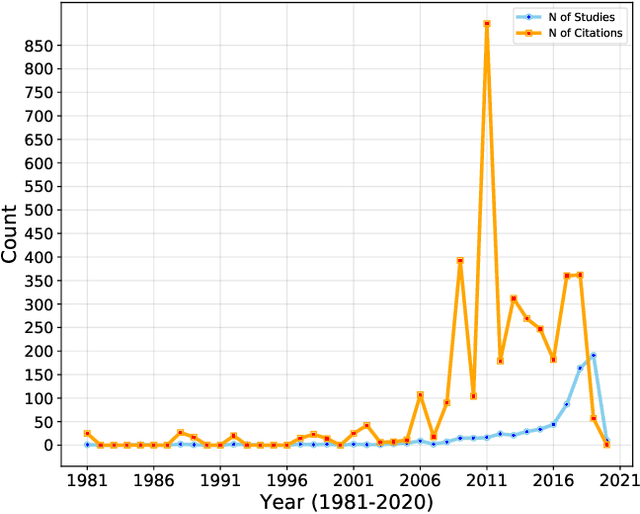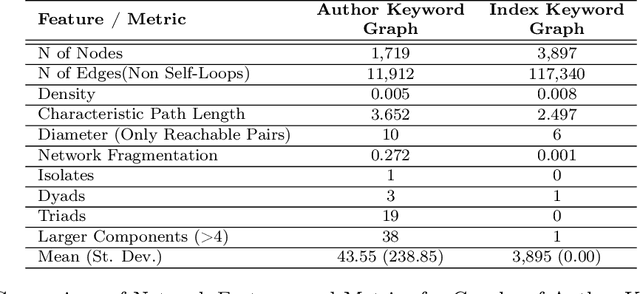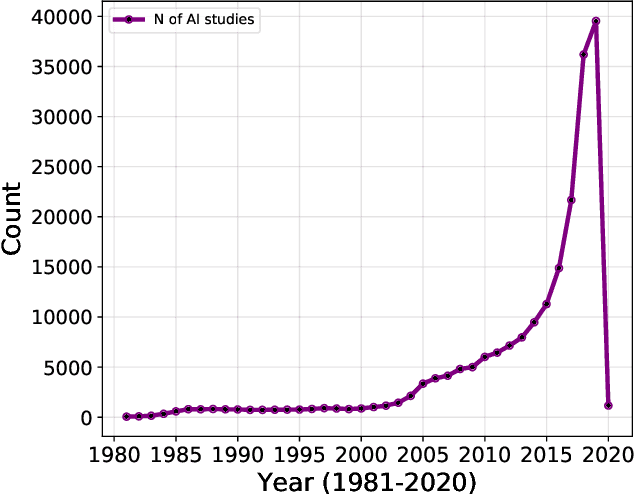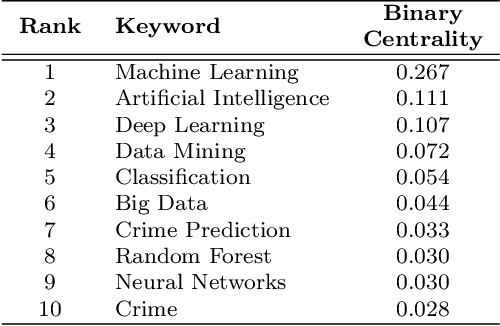Where Are We? Using Scopus to Map the Literature at the Intersection Between Artificial Intelligence and Crime
Paper and Code
Dec 23, 2019



Research on Artificial Intelligence (AI) applications has spread over many scientific disciplines. Scientists have tested the power of intelligent algorithms developed to predict (or learn from) natural, physical and social phenomena. This also applies to crime-related research problems. Nonetheless, studies that map the current state of the art at the intersection between AI and crime are lacking. What are the current research trends in terms of topics in this area? What is the structure of scientific collaboration when considering works investigating criminal issues using machine learning, deep learning and AI in general? What are the most active countries in this specific scientific sphere? Using data retrieved from Scopus database, this work quantitatively analyzes published works at the intersection between AI and crime employing network science to respond to these questions. Results show that researchers are mainly focusing on cyber-related criminal topics and that relevant themes such as algorithmic discrimination, fairness, and ethics are considerably overlooked. Furthermore, data highlight the extremely disconnected structure of co-authorship networks. Such disconnectedness may represent a substantial obstacle to a more solid community of scientists interested in these topics. Additionally, the graph of scientific collaboration indicates that countries that are more prone to engage in international partnerships are generally less central in the network. This means that scholars working in highly productive countries (e.g. the United States, China) tend to collaborate with researchers based in their same countries. Finally, current issues and future developments within this scientific area are also discussed.
 Add to Chrome
Add to Chrome Add to Firefox
Add to Firefox Add to Edge
Add to Edge